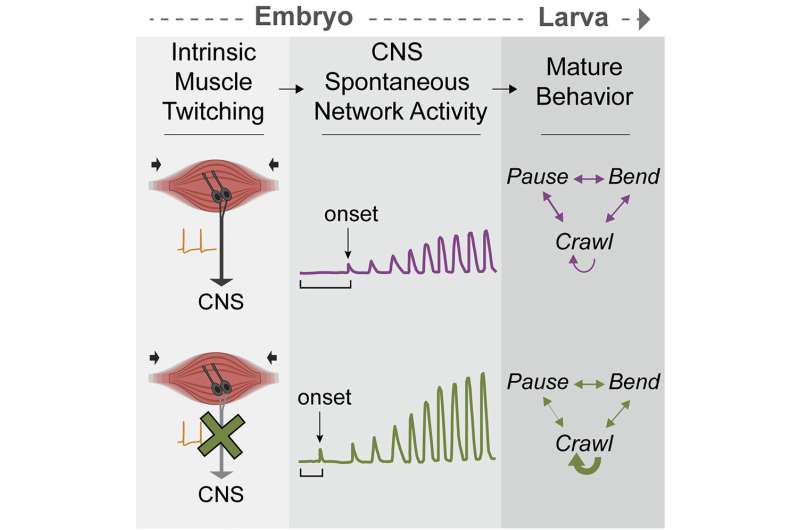Unraveling the origins of innate behavior in flies

Human babies are born knowing how to suckle, and larval flies hatch knowing how to crawl. But even these innate behaviors don't appear out of nowhere.
Patterned waves of brain activity during prehatching shape larval flies' innate crawling behavior after they hatch, according to a study published Sept. 2 in the journal Current Biology. The work was led by Arnaldo Carreira-Rosario, a postdoctoral researcher who has split his time between biology professor Chris Doe's lab at UO and neurobiology professor Thomas Clandinin's lab at Stanford University.
"We're studying how the brain first becomes active, which we don't understand in any animal system," Carreira-Rosario said. Figuring out how innate behaviors are generated in flies might help scientists eventually answer similar questions in vertebrates.
In flies, this patterned brain activity is influenced by twitches and contractions in the fly's muscles that happen before the brain is controlling movement in any sort of coordinated way, the team found. The signals from the muscles appear to put the brakes on the patterned brain activity until the time is just right. If the patterned activity begins too soon, the larval flies don't move normally.
The next step is to test whether disruptions to patterned brain activity change the development of the neural circuits that help flies crawl and whether this brain activity also affects other innate behaviors such as grooming and mating behavior, Doe said.
More information: Arnaldo Carreira-Rosario et al, Mechanosensory input during circuit formation shapes Drosophila motor behavior through patterned spontaneous network activity, Current Biology (2021). DOI: 10.1016/j.cub.2021.08.022
Journal information: Current Biology
Provided by University of Oregon


















